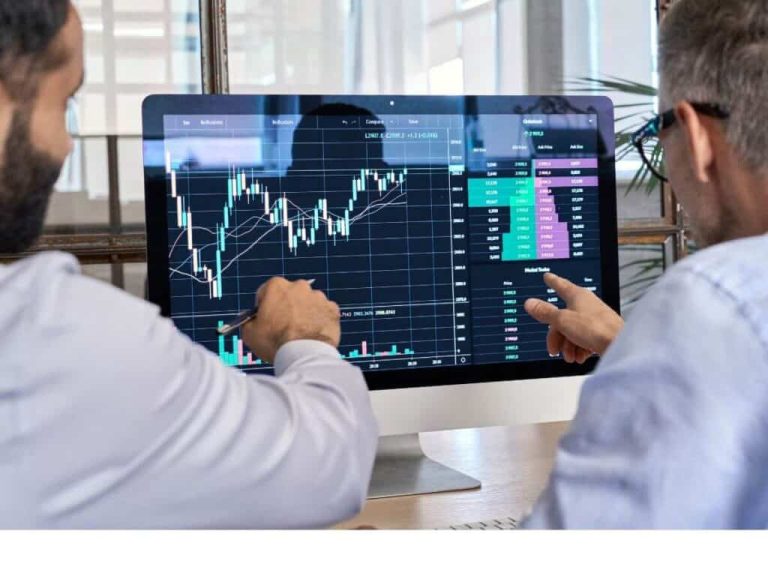Understanding the Basics of Tradings
Trading is a term that characterizes the buying and selling of financial instruments such as stocks, bonds, commodities, and currencies with the aim of generating profit. It is an essential part of the financial market ecosystem, allowing investors to capitalize on price fluctuations over various time frames. For those seeking to delve into the world of tradings, understanding the fundamentals is crucial.
What is Trading?
At its core, trading involves entering into transactions where parties exchange financial assets. Unlike investing, which often refers to a long-term strategy focused on purchasing an asset and holding it, trading occurs more frequently, with traders often looking to leverage short-term price movements. Traders can engage in several markets, including stock markets, currency (Forex) markets, and commodities markets. The primary goal in trading is to buy low and sell high, thus generating a profit from market movements.
Types of Tradings Explained
There are various types of trading strategies suited for different trading styles, each with its characteristics and target audience:
- Day Trading: This approach involves executing multiple trades within a single day, with the aim of taking advantage of small price fluctuations. Day traders typically close all positions before the market closes, avoiding overnight risk.
- Swing Trading: Swing traders hold positions longer than day traders, usually from a few days to several weeks. They focus on capturing price swings in the market, studying charts and trends to inform their decisions.
- Scalping: Scalpers aim to make small profits from frequent trades throughout the day, accumulating these small gains through significant buy/sell volumes. This strategy requires quick decision-making and execution.
- Position Trading: This is a long-term strategy where traders hold positions for months or even years, based on the belief that an asset will increase in value over time. This approach requires less frequent monitoring and more analysis of fundamental factors.
- Algorithmic Trading: Utilizing technology, algorithmic trading involves the use of computer algorithms to automate trades based on specific criteria. This strategy can help take emotion out of trading, allowing for rapid execution and analysis.
Essential Trading Terms to Know
To navigate the trading landscape effectively, traders must familiarize themselves with key terms and definitions:
- Asset: Any item of economic value owned by a trader, which can be traded for profit.
- Broker: A person or firm that executes trades on behalf of clients, usually for a fee.
- Leverage: The ability to control a large position with a smaller amount of capital, increasing both potential returns and risks.
- Liquidity: Refers to how quickly an asset can be bought or sold in the market without causing a drastic price change.
- Volatility: A statistical measure of the dispersion of returns for a given asset, indicating the degree of price fluctuations over time.
- Technical Analysis: A method of evaluating securities by analyzing statistical trends from trading activity, including price movement and volume.
- Fundamental Analysis: A research methodology focused on evaluating a company’s intrinsic value based on economic and financial factors.
Key Strategies for Successful Tradings
Success in trading requires a combination of knowledge, strategy, and psychological discipline. Here, we explore some of the essential strategies that can guide traders toward successful trading ventures.
Day Trading vs. Swing Trading: Choosing Your Path
Understanding the differences between day trading and swing trading is vital for new traders. Day trading involves making dozens of trades within a single day, focusing on high liquidity stocks and making quick profits on price fluctuations. Swing trading, on the other hand, allows traders to hold positions for days or weeks, relying more on technical analysis to identify entry and exit points based on market trends.
Technical Analysis for Beginners
Technical analysis provides traders with tools to forecast future price movements based on historical data. Key elements include:
- Charts: Visual representations of price movements over time. Common types include line charts, bar charts, and candlestick charts.
- Indicators: Mathematical calculations based on price, volume, or open interest, used to predict future movements. Examples include Moving Averages, Relative Strength Index (RSI), and MACD.
- Support and Resistance Levels: Price levels at which an asset tends to stop and reverse patterns. These are crucial for determining entry and exit points for trades.
Fundamental Analysis: Insights for Traders
Fundamental analysis involves evaluating a company’s financial health and market position. Traders focus on key metrics such as earnings reports, economic indicators, and news releases that can affect asset values. For instance, understanding a company’s earnings per share (EPS) or price-to-earnings ratio (P/E ratio) can provide insights into whether a stock is undervalued or overvalued.
Additionally, macroeconomic factors like interest rates, inflation, and GDP growth play significant roles in influencing market movements. By staying informed on not just individual companies but also the broader economic landscape, traders can make more educated decisions.
Common Challenges in Tradings
Despite its potential for profit, trading comes with inherent risks and challenges that can deter even seasoned traders. Understanding and overcoming these hurdles is key to success.
Managing Risk in Trading
Risk management is crucial for preserving capital and ensuring long-term viability in trading. Here are common strategies to minimize trading risks:
- Position Sizing: Determine how much capital to risk on individual trades. Often, risk management strategies suggest not risking more than 1-2% of your trading capital on a single trade.
- Stop-Loss Orders: A stop-loss order automatically sells a security when it reaches a certain price, limiting potential losses.
- Diversification: Spreading investments across different assets to reduce exposure to any single asset or risk.
Emotion Control: The Trader’s Mindset
Emotional decision-making can lead to poor trading outcomes. Developing a disciplined approach entails using a trading plan that outlines specific entry and exit strategies, which can help mitigate emotional responses. Strategies include:
- Trading Journal: Keeping a detailed record of trades allows for reflective analysis and helps identify emotional patterns and mistakes.
- Set Realistic Goals: Establish achievable trading objectives that reduce the pressure of performance and emotional stress.
Overcoming Market Volatility
Market volatility presents both risks and opportunities. To navigate through turbulent conditions:
- Stay Informed: Keeping abreast of market news, earnings reports, and economic data releases can help traders anticipate market shifts.
- Adapt Trading Strategies: Flexibility in approaching trading strategies based on current market conditions can aid traders in maximizing profitability during volatile periods.
Advanced Techniques and Tools for Tradings
As technology evolves, so do trading strategies. To stay competitive in today’s markets, traders must leverage advanced techniques and tools.
Using Trading Platforms Effectively
Modern trading platforms provide extensive tools and functionalities, making them indispensable for serious traders. Key features to utilize include:
- Charting Tools: Analyze historical price movements with advanced chart functionalities to identify trends and patterns.
- Complex Orders: Learn to place various order types, such as limit orders, market orders, and conditional orders to enhance execution strategies.
- Research and Analysis Tools: Utilize resources such as news feeds and economic calendars provided by trading platforms, to make informed trading decisions.
Algorithms and Trading Bots: The Future of Tradings
Algorithmic trading has gained prominence as traders seek greater efficiency and reduced response times. Some advantages include:
- Speed: Algorithms can execute trades at optimal prices much faster than human traders.
- Emotion-Free Trading: Bots operate strictly based on programmed criteria, eliminating emotional decision-making.
- Backtesting: Traders can simulate strategies against historical data before deploying them in real-time, allowing for improved strategy refinement.
Evaluating Market Trends and Patterns
Recognizing market trends is fundamental in making informed trading decisions. Common methods include:
- Trend Lines: Drawing trend lines can help identify upward or downward trends effectively.
- Moving Averages: These provide insights into price trends over specific time frames, smoothing out fluctuations in price data.
- Volume Analysis: Examining trading volumes gives clues about the strength of price movements, helping predict potential reversals.
Improving Your Trading Performance
Continuous improvement is central to successful trading. Here are strategies to refine skills and enhance performance over time.
Measuring Your Trading Success
Establishing clear metrics for success allows traders to evaluate performance accurately. Key performance indicators (KPIs) to track include:
- Win Rate: The percentage of trades that result in a profit.
- Risk-Reward Ratio: The ratio of potential profit compared to potential loss in trades.
- Maximum Drawdown: The largest percentage drop experienced in a trading account from its peak to its lowest point, useful for assessing risk tolerance.
Continuous Learning: Resources for Traders
The trading landscape is always evolving. Traders can enhance their knowledge through various resources:
- Online Courses: Many platforms offer courses on trading strategies, technical analysis, and fundamentals that can reinforce knowledge.
- Books and Blogs: Literature from successful traders and investment theorists can provide insights into different trading philosophies and strategies.
- Trading Forums and Webinars: Engaging with the trading community offers priceless perspectives and practical tips from traders of various experience levels.
Building a Trading Community: Networking Benefits
Networking with other traders can offer additional layers of support and insight. By engaging with trading communities, participants can:
- Share Strategies: Exchange successful trading methods and techniques, promoting an atmosphere of mutual learning.
- Gain New Perspectives: Hearing different viewpoints can broaden understanding and challenge existing beliefs about trading.
- Emotional Support: Trading can be isolating; connecting with peers can provide much-needed motivation and emotional support during challenging times.













+ There are no comments
Add yours